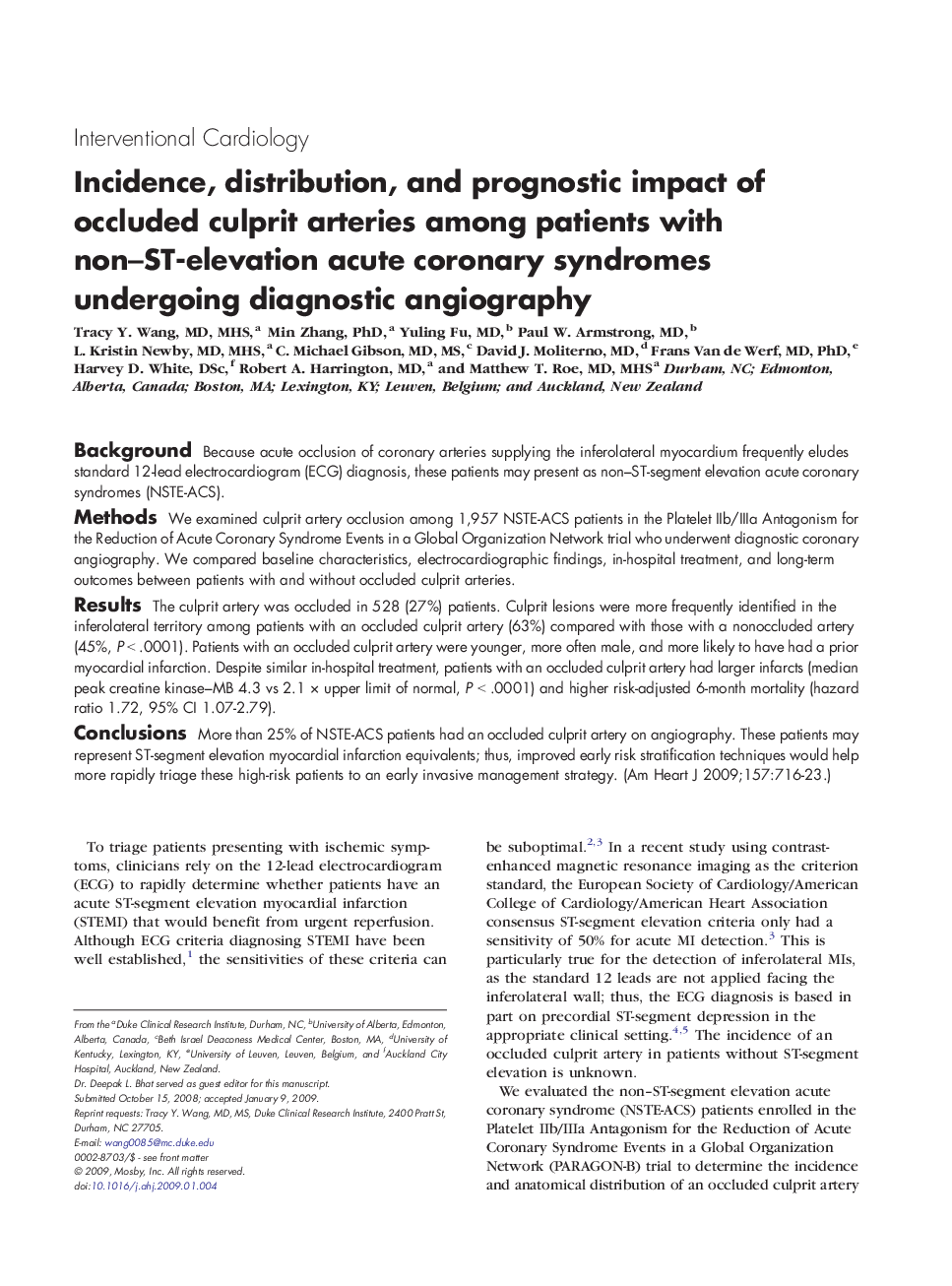| Article ID | Journal | Published Year | Pages | File Type |
|---|---|---|---|---|
| 2851583 | American Heart Journal | 2009 | 8 Pages |
BackgroundBecause acute occlusion of coronary arteries supplying the inferolateral myocardium frequently eludes standard 12-lead electrocardiogram (ECG) diagnosis, these patients may present as non–ST-segment elevation acute coronary syndromes (NSTE-ACS).MethodsWe examined culprit artery occlusion among 1,957 NSTE-ACS patients in the Platelet IIb/IIIa Antagonism for the Reduction of Acute Coronary Syndrome Events in a Global Organization Network trial who underwent diagnostic coronary angiography. We compared baseline characteristics, electrocardiographic findings, in-hospital treatment, and long-term outcomes between patients with and without occluded culprit arteries.ResultsThe culprit artery was occluded in 528 (27%) patients. Culprit lesions were more frequently identified in the inferolateral territory among patients with an occluded culprit artery (63%) compared with those with a nonoccluded artery (45%, P < .0001). Patients with an occluded culprit artery were younger, more often male, and more likely to have had a prior myocardial infarction. Despite similar in-hospital treatment, patients with an occluded culprit artery had larger infarcts (median peak creatine kinase–MB 4.3 vs 2.1 × upper limit of normal, P < .0001) and higher risk-adjusted 6-month mortality (hazard ratio 1.72, 95% CI 1.07-2.79).ConclusionsMore than 25% of NSTE-ACS patients had an occluded culprit artery on angiography. These patients may represent ST-segment elevation myocardial infarction equivalents; thus, improved early risk stratification techniques would help more rapidly triage these high-risk patients to an early invasive management strategy.
